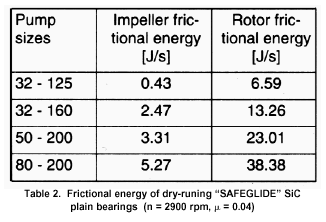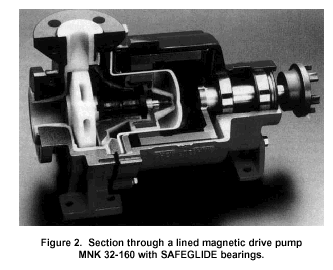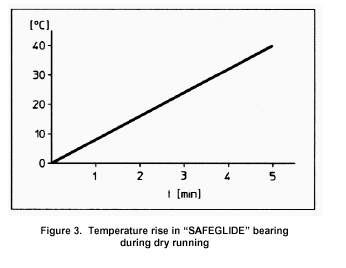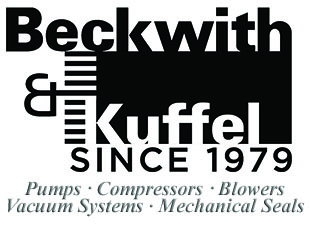Plain Bearings Made of Silicon Carbide With Optimized Dry-running Properties for Plastic-lined Magnetic Drive Pumps - Section 1
Damage to magnetic drive pumps is frequently attributable to running dry; this applies in particular when silicon-carbide plain bearings are used. The frictional heat which is produced in the plain bearings when the pump is activated without medium is so great that the bearings are already damaged after just a few seconds, which results in the complete destruction of the pump if dry running continues.
Dry running
Although every user of centrifugal pumps knows that magnetic drive pumps must not be operated without medium, it repeatedly happens that pumps briefly run dry when the direction of rotation of the prime mover is being checked or when the valves in the suction line are not opened.
Figure 1 shows that the arrangement of the bearing points and the rotating components of the pump are important for the loading of the plain bearings. Large bearing distances and the arrangement of the bearing points near the impeller and pump rotor reduce the load.
Plain bearings made of silicon carbide
Silicon carbide, SiC, has gained wide acceptance over many years as the bearing material for magnetic drive pumps. Its special properties, such as dimensional stability, great hardness, low wear and almost universal chemical resistance, make it an excellent material for bearings.
The high price has fallen substantially in recent years owing to optimized production methods and bearing designs suitable for ceramics.
However, the high coefficient of friction of SiC against SiC of 0.5 to 0.7 means that relatively high frictional energy occurs on the sliding surfaces of plain bearings which are not lubricated or cooled. Table 1 contains frictional energies for various pump sizes in the MNK and MNK-B series.
The contact of the bearing bush and the bearing sleeve takes place in flexible bearings along a line; if the bearings are rigid, contact only occurs at a point. The entire frictional energy is converted into heat in the small contact zone. The result is that very high temperatures occur at this point and they in turn can lead to silicon particles flaking off the plain bearing surface and ultimately destroying the entire plain bearing system in a short time.
In the past a lot of research work was conducted to improve the sliding properties of silicon carbide. For example, attempts were made to reduce the coefficient of friction using SiC grades with embedded carbon particles and to maintain brief emergency lubrication with porous SiC. However, the results were not so successful that magnetic drive pumps could be run dry with these materials. Coatings of SiC plain bearings with a soft carbon layer (e.g. graphite) also permitted only a one-off dry start-up of the pump as the layer wears very quickly.
"SAFEGLIDE" Coating
It consists of an amorphous layer made of diamond-like carbon just a few microns thick which is applied to the silicon carbide bearing by special process. The layer is charactized by the following properties:
- amorphous isotropic, readily adhesive layer
- great hardness (HV0.05 4000-6000)
- good elasticity in spite of great hardness
- high wear resistance
- optimum surface qualities
- good thermal conductivity
- temperature-resistant up to 300?C
- universally resistant to chemicals; cannot be destroyed by wet chemicals
The property which is most important for its use as a friction-reducing layer in plain bearings is the coefficient of friction. It is 0.02 to 0.04 in the non-lubricated, i.e. dry, state. (SAFEGLIDE against SAFEGLIDE)
The frictional energy during dry running falls dramatically with these low co-efficients of friction. Table 2 contains the relevant fiqures.
This coating made it possible for the first time to let magnetic drive pumps (Figure 2) run bone dry for a period of up to 5 minutes at 2900 rpm.
While it was not possible to measure the development of the temperature in non-coated plain bearings at a speed of 2900 rpm owing to the very rapid destruction of the bearings, the temperature curve illustrated in Figure 3 was measured on coated plain bearings.






